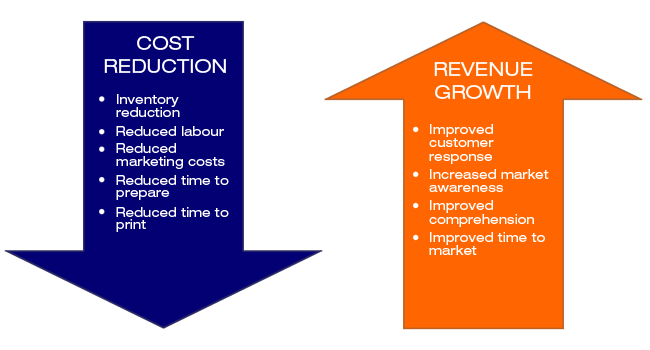A Biased View of Digital Printing
A Biased View of Digital Printing
Blog Article
The 2-Minute Rule for Digital Printing
Table of ContentsThe smart Trick of Digital Printing That Nobody is Talking AboutIndicators on Digital Printing You Need To KnowSome Known Factual Statements About Digital Printing Our Digital Printing IdeasGet This Report about Digital Printing8 Easy Facts About Digital Printing Explained
Variable data printing, such as direct mail with personalized codes and addresses, is ideally fit for digital printing. Digital fast printing only requires four steps of style, review, printing and binding to obtain everything done. Digital quick printing has an exceptional advantage: print on demand.According to PMMI, electronic printing allows brand names and producers to respond rapidly to client needs while enhancing the supply chain, reducing warehousing cost and waste, and enjoying faster time to market. That all sounds fantastic, however just how does this modern technology do all that? The major differentiator of these technologies is that there are no set-up costs and no plates with electronic printing.
7 Easy Facts About Digital Printing Explained
According to Wikipedia, the best distinction in between digital printing and standard techniques such as lithography, flexography, gravure, or letterpress - Digital Printing is that there is no demand to replace printing plates in electronic printing, whereas in these analog printing methods the plates are continuously replaced. This causes quicker turn-around time and lowers price when utilizing digital printing.
Rapid production implies getting your product to market quicker. It also indicates it's simpler and faster to make modifications later on, when you alter a dish, include a SKU, or develop seasonal packaging. Digital printing is very flexible, so it's very easy to make modifications to the package design promptly. Everything returns to home plates.
With standard printing approaches, short-run printing is just not feasible. Because a fantastic layout can make or damage your item, electronic printing regularly produces top notch, clear and vivid graphics each time.
Digital printing is the process of printing digital-based photos straight onto a variety of media substrates. There is no need for a printing plate, unlike with countered printing. Digital data such as PDFs or desktop computer publishing documents can be sent directly to the digital printing machine to print on paper, picture paper, canvas, textile, synthetics, cardstock and other substratums.
The Greatest Guide To Digital Printing
According to PMMI, electronic printing allows brand names and manufacturers to respond swiftly to client needs while enhancing the supply chain, lowering warehousing cost and waste, and delighting in faster time to market. That all audios great, yet just how does this modern technology do all that? The major differentiator of these modern technologies is that there are no set up costs and no plates with electronic printing.
According to Wikipedia, the best distinction in between digital printing and traditional approaches such as lithography, flexography, gravure, or letterpress is that there is no demand to change printing plates in electronic printing, whereas in these analog printing techniques the plates are repeatedly replaced. This causes quicker turn-around time and reduces expense when utilizing electronic printing.

Our Digital Printing Ideas
Extra stock can imply more waste later on. With traditional printing approaches, short-run printing is simply not possible. Because an excellent style can make or damage your product, electronic printing consistently develops top quality, clear and vibrant graphics each time. Digital printing on versatile bags includes the bright, click site vivid, and accurate graphics that virtually bid his comment is here consumers to get to out and touch them.

According to PMMI, digital printing enables brand names and suppliers to respond promptly to client needs while improving the supply chain, minimizing warehousing price and waste, and taking pleasure in faster time to market. That all noises great, however exactly how does this innovation do all that? The major differentiator of these innovations is that there are no set up fees and no plates with electronic printing.
The Main Principles Of Digital Printing
According to Wikipedia, the biggest distinction in between electronic printing and traditional techniques such click to find out more as lithography, flexography, gravure, or letterpress is that there is no requirement to replace printing plates in electronic printing, whereas in these analog printing techniques home plates are consistently changed. This leads to quicker turn-around time and reduces price when making use of electronic printing.
Digital printing is highly adaptable, so it's simple to make changes to the plan design promptly. It all goes back to the plates.

The Of Digital Printing
Digital printing is the process of printing digital-based pictures directly onto a selection of media substrates. There is no requirement for a printing plate, unlike with offset printing. Digital files such as PDFs or desktop computer publishing documents can be sent straight to the digital printing press to print theoretically, image paper, canvas, textile, synthetics, cardstock and various other substrates.
Report this page